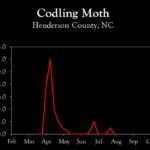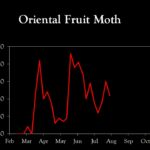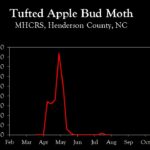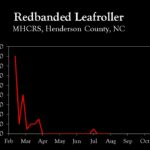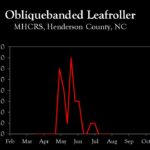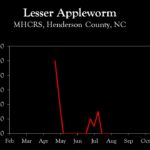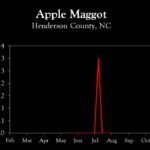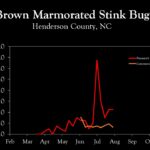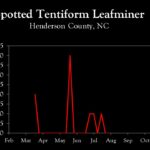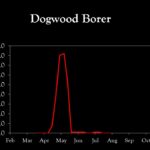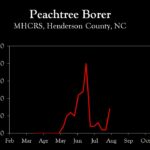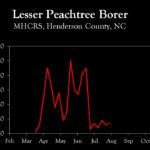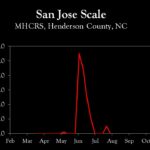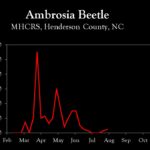WNC Orchard Insect Pest Populations – August 23, 2022
go.ncsu.edu/readext?881765
en Español / em Português
El inglés es el idioma de control de esta página. En la medida en que haya algún conflicto entre la traducción al inglés y la traducción, el inglés prevalece.
Al hacer clic en el enlace de traducción se activa un servicio de traducción gratuito para convertir la página al español. Al igual que con cualquier traducción por Internet, la conversión no es sensible al contexto y puede que no traduzca el texto en su significado original. NC State Extension no garantiza la exactitud del texto traducido. Por favor, tenga en cuenta que algunas aplicaciones y/o servicios pueden no funcionar como se espera cuando se traducen.
Português
Inglês é o idioma de controle desta página. Na medida que haja algum conflito entre o texto original em Inglês e a tradução, o Inglês prevalece.
Ao clicar no link de tradução, um serviço gratuito de tradução será ativado para converter a página para o Português. Como em qualquer tradução pela internet, a conversão não é sensivel ao contexto e pode não ocorrer a tradução para o significado orginal. O serviço de Extensão da Carolina do Norte (NC State Extension) não garante a exatidão do texto traduzido. Por favor, observe que algumas funções ou serviços podem não funcionar como esperado após a tradução.
English
English is the controlling language of this page. To the extent there is any conflict between the English text and the translation, English controls.
Clicking on the translation link activates a free translation service to convert the page to Spanish. As with any Internet translation, the conversion is not context-sensitive and may not translate the text to its original meaning. NC State Extension does not guarantee the accuracy of the translated text. Please note that some applications and/or services may not function as expected when translated.
Collapse ▲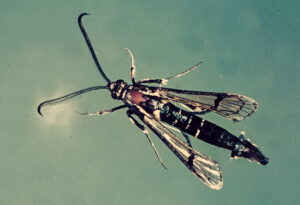 Overall, insect populations are quite low throughout the area. Codling moth and oriental fruit moth trap captures remain low, and there is very little evidence of damaged fruit. Based on model predictions, approximately 50% of first generation brown marmorated stink bug adults have emerged in Henderson and Wilkes Counties, and almost 90% in lower elevations in Cleveland County. However, pheromone trap captures remain surprisingly low. In past years, adult captures were considerably higher at similar DD accumulations. High temperatures during the main egg laying period in mid June and early July may have played a role in suppressing populations.
Overall, insect populations are quite low throughout the area. Codling moth and oriental fruit moth trap captures remain low, and there is very little evidence of damaged fruit. Based on model predictions, approximately 50% of first generation brown marmorated stink bug adults have emerged in Henderson and Wilkes Counties, and almost 90% in lower elevations in Cleveland County. However, pheromone trap captures remain surprisingly low. In past years, adult captures were considerably higher at similar DD accumulations. High temperatures during the main egg laying period in mid June and early July may have played a role in suppressing populations.
Finally, apple maggot populations in Henderson County remain very low. However, populations can vary considerably among locations. In fact, Doug Hundley reported high captures of flies during the past few weeks on red sphere traps in Avery County orchards at elevations of about 3500 ft. It should be noted that orchards located at elevations greater than about 2700 ft have consistently had higher populations than lower elevation orchards.
Peachtree Borer Control
There have been questions regarding how to control peachtree borer now that Lorsban is no longer registered on bearing trees. The only insecticide with PTB on the label is Asana. The labeled rate ranges from 4.8 to 14.5 oz per acre, and applications directed trunk sprays. Two applications at 14-21 days may be necessary.
Learn more about southeastern apple insect pests at the Apple Insect Management page.
2022 Average Weekly Trap Captures
| HENDERSON COUNTY | |||
| Insects per trap | |||
| Aug 8 | Aug 15 | Aug 22 | |
| Codling moth | 0.0 | 1.0 | 0.0 |
| Oriental fruit moth | 9.0 | 15.0 | 11.0 |
| Tufted apple bud moth | 1.0 | 0.0 | 0.0 |
| Redbanded leafroller | 0.0 | 0.0 | 0.0 |
| Obliquebanded leafroller | 0.0 | 0.0 | 0.0 |
| Lesser appleworm | 0.0 | 0.0 | 0.0 |
| Apple maggot (abandoned and research orchards) | 0.0 | 0.0 | 0.0 |
| Brown marmorated stink bug (commercial) | 1.6 | 1.9 | 1.3 |
| Brown marmorated stink bug (unsprayed) | 3.0 | 4.5 | 4.5 |
| Spotted tentiform leafminer | 1.0 | 0.0 | 0.0 |
| Dogwood borer | 0.0 | 0.0 | 0.0 |
| Peachtree borer | 3.0 | 1.0 | 7.0 |
| Lesser peachtree borer | 4.0 | 9.0 | 7.0 |
| San Jose scale | 0.0 | 0.0 | 0.0 |
| Ambrosia beetle (all species) | 0.0 | 0.0 | 0.5 |
*Note that these averages illustrate only the timing of insect emergence and fluctuations in populations, and are not representative of population levels in any given orchard. The only way to have an accurate assessment of an individual orchard’s populations is to set up traps in that orchard.
2022 Accumulated Degree Days
| HENDERSON COUNTY | ||||
| Aug 8 | Aug 15 | Aug 22 | ||
| Codling moth (Biofix: April 22) | 2193 | 2358 | 2506 | |
| Oriental fruit moth (Biofix: April 12) | 2806 | 3005 | 3189 | |
| Tufted apple bud moth (Biofix: April 27) | 2608 | 2828 | 2991 | |



